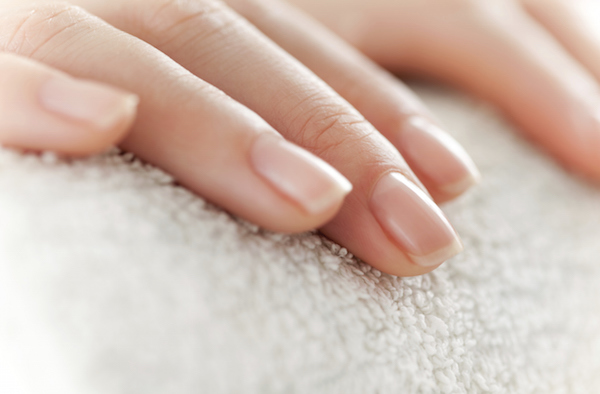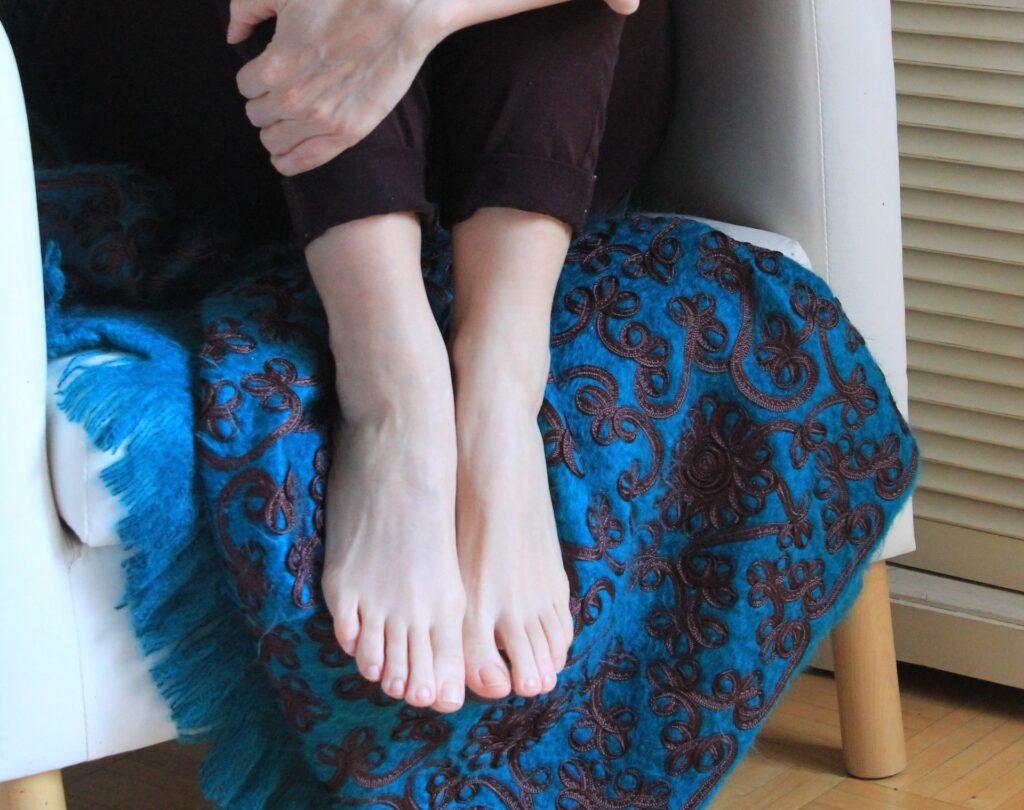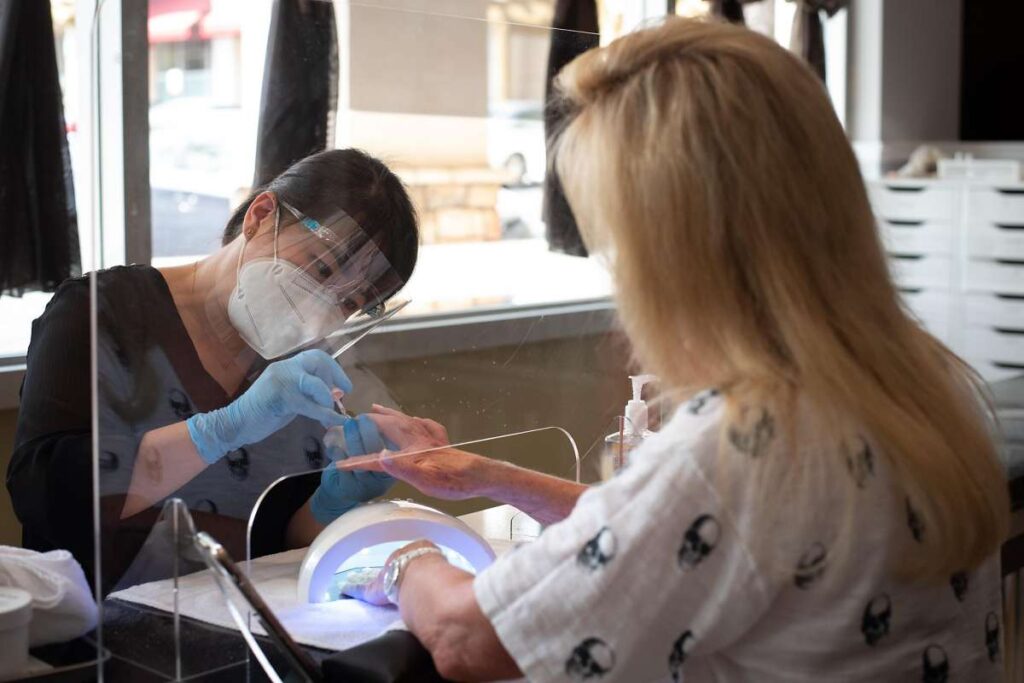Nail polish is something I never expected to research or write about, but last week’s post on carcinogens and endocrine disruptors in sunscreen [1] made me think about the dangers inherent in other products we commonly apply to our bodies. I have never been one to wear a lot of nail polish, at least not since high school. In fact, I don’t think I have painted my own nails for anything other than a costume in the last 20 years.
I can point to being a tomboy; I can point to being lazy; I can point to my mom telling me that consistently wearing nail polish deprives your nails of oxygen (as she removed and reapplied polish to her own nails). But in reality, it’s never been a priority for me, and any time spent perfecting my nails has always seemed like a waste, like it could be so much better spent elsewhere.
Over the past year, I’ve seen beauty standards slide as a result of the pandemic lockdown, and I for one am fine with that. At least among the people I know, we informally gave each other collective permission to deprioritize physical appearance as we tried to balance home and work obligations in a time of collective trauma. As we look ahead to the new normal, I wonder how much we’ll bounce back to our pre-pandemic routines, particularly as many people have seen how unnecessary (and unhealthy) some of those routines were.

Beauty Expectations
I’ve only had about three manicures in my life. I got my first one before junior prom, and I was shocked at how painful the process was. I was not expecting pain – or blood. Looking at my broken skin, I wondered how clean the equipment was – everything used on my hands appeared to come off of a shelf, not sanitized in between customers. I was too scared to ask questions or request gentler treatment, but even if I had been bolder, the woman spraying French tips on my nails spoke little to no English.
Senior year I had my nails done at a high-end salon and realized my first time was not representative of all manicures. Nevertheless, this far-better experience still didn’t change my mind about whether I saw any value in getting my nails done. It still seemed to me to be something one did for special occasions, and even then it was driven more out of obligation to ritual and compliance to beauty standards than a desire to go through the process. (Interestingly, some beauty companies have made note of that mindset among customers over the past year – apparently it’s not just me.[3])
I got my first (and only) pedicure with my soon-to-be mother- and sister-in-law several years ago before a beach trip. They graciously invited me along for something that was a tradition for them. It was so much more involved than a manicure, and I had no idea what was happening for most of the appointment. When it was time for color, I picked the shade that looked closest to my natural nails. While I wasn’t a fan of the process and had no real desire to do it again, I did appreciate my newfound ability to walk around in sandals for the first time since college without feeling self-conscious about my toenails.

A lot of my internalized dress code standards – at least in professional settings – are holdovers from when I lived and worked in Japan: no sleeveless tops, always stockings with skirts or dresses, and no open-toed shoes. Naked feet were not OK – tabi (socks with a separation for your big toe) are worn with sandals as part of formal or traditional dress in all seasons. Similarly, I was even expected to wear white ankle socks over my stockings at times because the stockings alone made it look like I was barefoot. Over time, showing my toes began to feel indecent.
Gender Norms
I was perfectly fine with these rigid requirements because I hate my feet. (I was once chastised by a co-worker when I said that – her response was “They carry you through marathons! How can you say that about them?”) I do try very hard to limit critical language about my body, but it doesn’t change the fact that I am embarrassed by how bad my toes look. I’ve lost toenails several times over years of distance running, sometimes during a race. When they grow back, they’re usually thick, brittle, and opaque. I don’t want to make them worse by hiding them with nail polish, so I hide them with shoes and socks instead.
It is interesting, though, to think about how little my husband, for example, considers his toes or whether or not they’re acceptable enough for sandals in the summer. It feels a little unfair, and that fact reminds me once again how many different beauty standards are based on gender. One unexpected conversation topic I encountered as we began a slow transition back to the office was when my female coworkers and I complained about how much extra time it took in the morning to do our hair and makeup, rather than rolling out of bed and onto a Zoom call. Our male coworkers were silent on the subject.

I want to mention that I’m using sweeping gender stereotypes here for the sake of ease, but I know women who never wear polish, and I know men who do. I know people who wear it for fun, not because they are ashamed to go without it. Adherence to beauty standards and gender stereotypes represents a complex web of topics, but I am only working to tackle one slice here: people who identify as female and feel pressure to have perfect nails.
Working within this gender-based standard, it becomes clear that for many people the need for nail polish – particularly toenail polish – is driven by a feeling of shame or inadequacy when comparing oneself to an ideal image.[6] As I dipped my own toes into this topic, I was shocked to see just how broad-reaching the impacts of this seemingly tiny beauty standard actually are. The vicious cycle of feeling inadequate, and therefore using products that are harmful to our health and negatively impact our natural appearance, in turn makes us feel more inadequate, leading us to continue to use more of the same product to cover the flaws, rather than breaking the cycle.
I thought the negative impacts of this cycle would be limited to the health and appearance of our nails, but no: there are repercussions as broad as bodily health, spread of disease, and worker exploitation. We will dive into some of those specifics in part two as we cover the dangers of the products, the processes, and the labor standards in the nail industry.
Until then, I’m curious to hear if your nail care habits changed during the pandemic. What did you do while the salons were closed – DIY or nothing at all?
Thanks for reading!
[1] https://radicalmoderate.online/sunscreen-risks-and-rewards/
[2] https://stylecaster.com/beauty/5-tricks-for-making-your-nails-look-great-without-polish/
[3] https://www.nytimes.com/2020/11/05/style/self-care-is-this-the-end-of-the-manicure.html
[4] https://www.glamour.com/story/why-i-stopped-painting-my-toes
[5] https://www.sfchronicle.com/business/article/I-m-so-scared-California-nail-salon-15579476.php
[6] https://digitalcommons.unomaha.edu/cgi/viewcontent.cgi?article=1028&context=university_honors_program
0 Comments